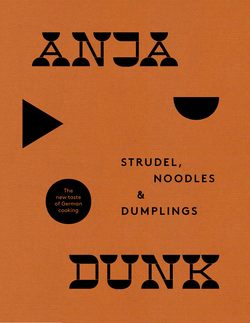Читать книгу Strudel, Noodles and Dumplings: The New Taste of German Cooking - Anja Dunk - Страница 10
REDISCOVERING GERMAN COOKING
ОглавлениеI strongly disagree with the bad reputation that German food has overseas and outside its borders. I can’t help but feel that our ideas about the German diet are incredibly out-dated. Go back a few decades, especially to the 1950s, and it’s easy to see where today’s erroneous notions come from – back then life was very different.
A Fresswelle (wave of gluttony) swept through Germany in the 1950s – a backlash of over-eating brought about through the dietary constraints of wartime rationing and the very real feeling of hunger that still lingered in the minds of many. A booming economy, which not only raised the quality of life within the country but also stirred hopeful feelings among a nation who felt they had little to be proud of in the early post-war days, was reflected in the growing waistlines and body weight of the people. Indulgent eating symbolised a newfound freedom and happiness, which everyone was hungry for.
Germans adopted a bon vivant alter ego – that of the cocktail-swilling, chain-smoking gourmet. Exotic flavours and exciting new food items flooded the market. My mum remembers her parents bringing home a tin of Hershey’s syrup for the first time, acquired from the American army base; this was seen as the height of luxury and was enjoyed drizzled over everything. Many foodstuffs unattainable to most households due to their prohibitive prices in previous years became affordable to the masses, and thus things like butter came back into fashion and pushed out, thank goodness, cheaper alternatives like margarine.
This newfound passion for life didn’t just stop at the kitchen door. An Urlaubswelle (holiday wave) took hold of the nation too and carried many flocks of Germans in their socks and sandals abroad on holiday. No sunlounger was safe – I am laughing as I write this but it’s true: the competitive side of a German is fierce, and when out in large numbers they are a force to be reckoned with.
While this wave of travel gained the Germans their rather unfortunate sunlounger-hogging reputation, they also gained something wonderful: the taste for new flavours, and ideas from cuisines and lands other than their own. Newfound ingredients, probably recipes too, were brought back to many German kitchens and an experimental, lighter way of cooking and eating at home began to emerge.
During the 1960s and 70s this new wave of cooking was kept buoyant by the many people who came to settle in West Germany. The gastronomic influence was broad, with people arriving from northern Africa, Portugal, former Yugoslavia, Greece, Italy and Spain. Probably, though, the most prominent taste influence was Turkey – doner kebab shops started popping up on many street corners and soon became the snack of choice. Now, fifty years on, ask any German of my generation and they will tell you that the doner has been adopted by the Germans and become a ‘national snack’, a portable street food equally as popular as the Bratwurst.
The fall of the Berlin Wall on 9 November 1989 saw the reunification of Germany. While West German cuisine had flourished and evolved through outside influence over the past twenty-eight years, East Germany had been living under a communist regime where everything foreign was viewed with suspicion. In the East people had to make do with what they had, which meant that food was inextricably bound to the land and seasons. Armed with little more than what could be home-grown, a small selection of state-approved products and brands and an unlimited supply of vinegar, the cooking of East Germany was unfussy, recipes were pared back and methods uncomplicated. There was an unspoken awareness among the people that food was and should be seen as something more than just a meal. It was essential, yes, but it was also a hundred other things: bitter, symbolic, joyous, rich, poor, lucky, hateful, welcoming, precious, hopeful and everything in between.
When Germany reunited as a nation, food from all sides was brought together. Germany was one of the great melting pots of Europe, a place where so much existed side by side. The broad culinary and social diversity owing to a migrant population was evident through the rise and popularity of Italian, Greek and Turkish restaurants. Every taste was catered for, and perhaps because so many new ideas and flavours were filtering into each kitchen, the hunger for regional dishes, many that had been forgotten for a time, was also stronger than ever. Food that was directly connected to the surrounding landscape and to those families who had lived in it for many years was an important thing for people to cling on to as society changed. This is the food I grew up with – lost food, regional food, frugal food, seasonal food, exciting, new and brilliant German food.
